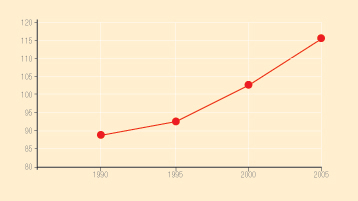This trend was mentioned in this column three years ago, but the startling thing is that it has accelerated sharply since then. Car manufacturers seem to be turning into slow-motion Intels: while their engines might not increase their power outputs at the same rate as computer chips, there seems to be a certain similarity between cars and computers.
Our appetite for power has always been there, but what has changed is the manufacturers’ ability to supply it. Now that virtually all engines come with four valves per cylinder and either multipoint petrol injection or common rail diesel injection, power outputs have soared. Twenty years ago, the average petrol engine produced 53bhp per litre and the average diesel 34bhp per litre. Today, the equivalent figures are around 68bhp and 61bhp respectively.
At the same time, they are getting bigger. Today, you cannot buy a Mondeo with an engine smaller than 1.8 litres, whereas Sierras once came with the (admittedly undesirable) option of a 1.3-litre motor. To see just how far this trend can go when unfettered by taxation, we can look at the USA. Today, you can buy a 300bhp Mustang for $25,000 (less than £15,000) in the States. Why settle for anything less?
Of course, European fuel prices and the industry’s voluntary agreement to limit CO2 emissions means that will never happen here, but we do have our own horsepower race. Since the invention of common rail injection for diesel engines, power output has rocketed (e.g. the recent BMW 535d with 272bhp from 3.0 litres and the Audi A8 4.2 TDI with 326bhp).
Faced with the apparently inexorable rise of diesels, the designers of petrol engines are fighting back. The recent FSI engine boosted the power of the VW Golf 2.0 from a weedy 115 bhp to a far more respectable 150 bhp. Indeed most petrol engines currently in design will produce a good 75 bhp per litre.
The way consumers are voting with their feet puts the public’s professed environmental concerns into perspective. The view is that everyone else should do the right thing, leaving more space and fuel for me, me, me. If eco-friendly cars powered by fuel cells are ever going to succeed, either we will have to change our views radically or government policy is going to have to do it for us.
Average bhp

Uniquely, the figures have been calculated as weighted averages: the engine power output of every version of a model multiplied by its market share. This is far more reliable than a simple average that could be skewed by a few powerful new supercars.













Login to comment
Comments
No comments have been made yet.